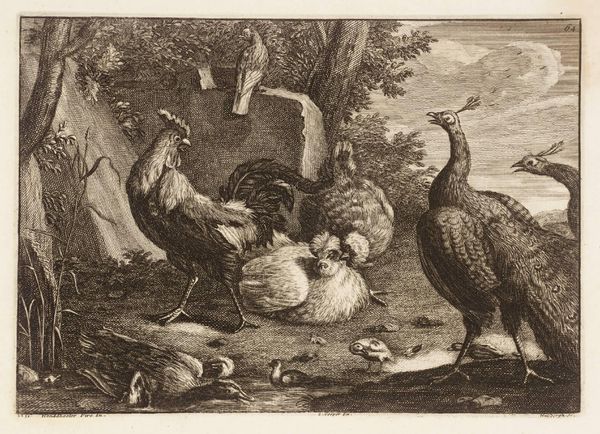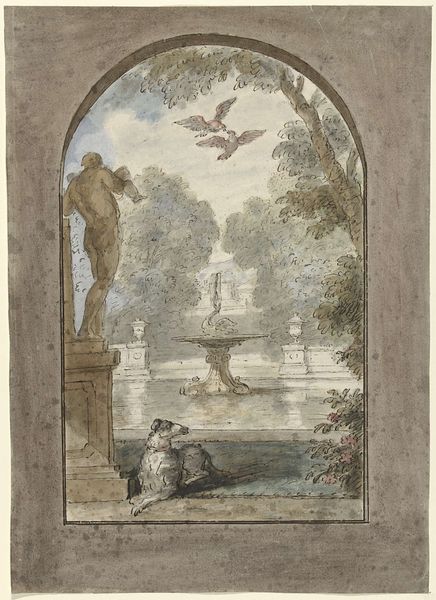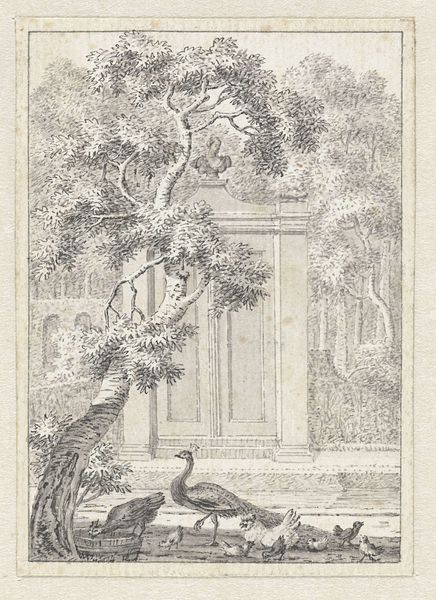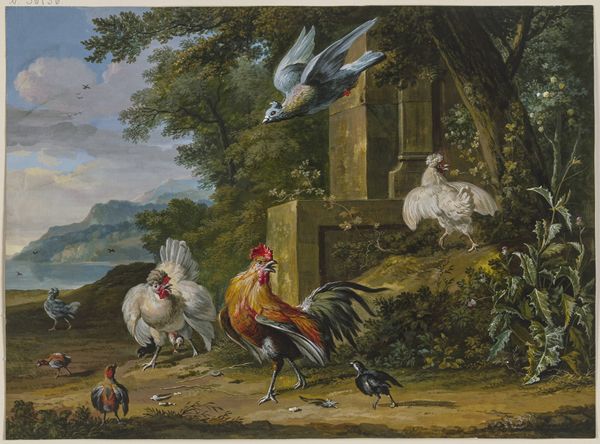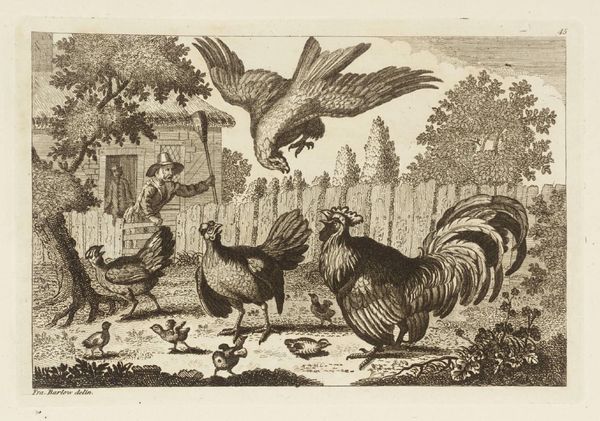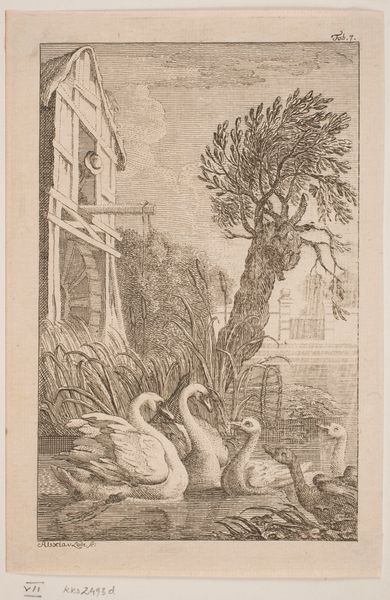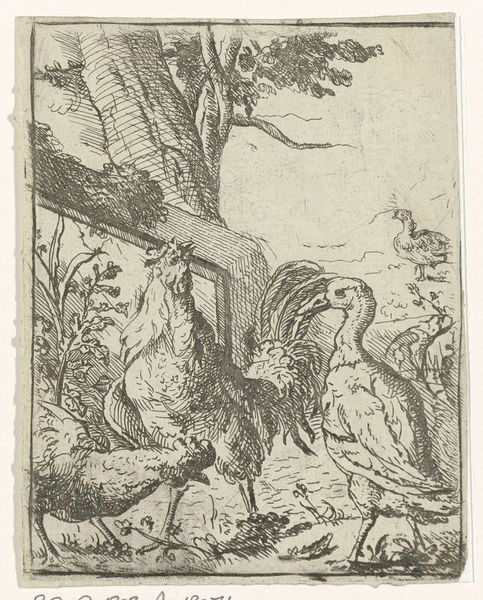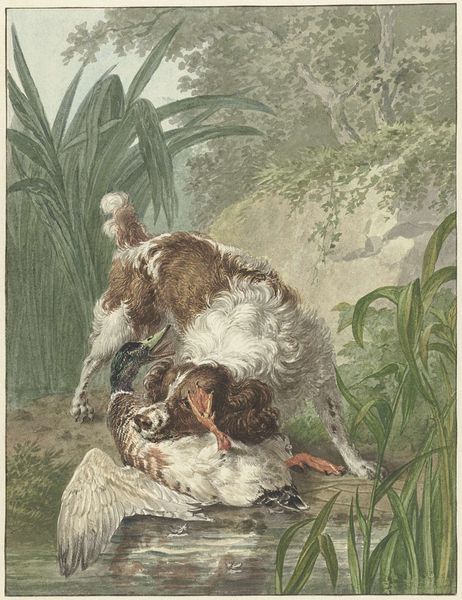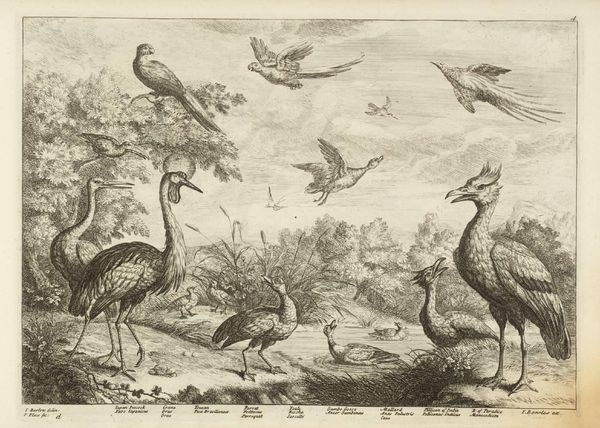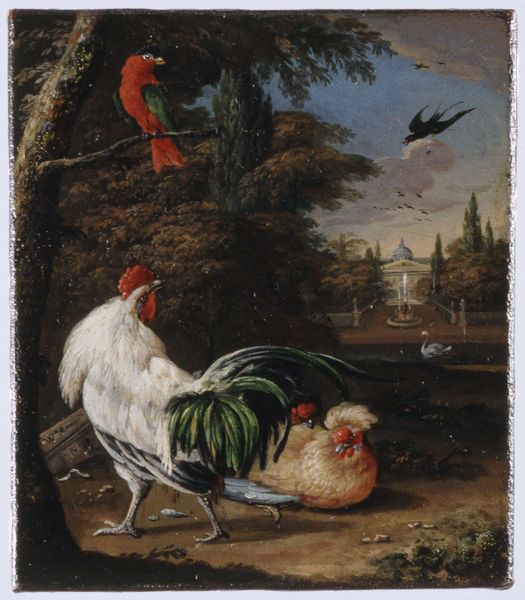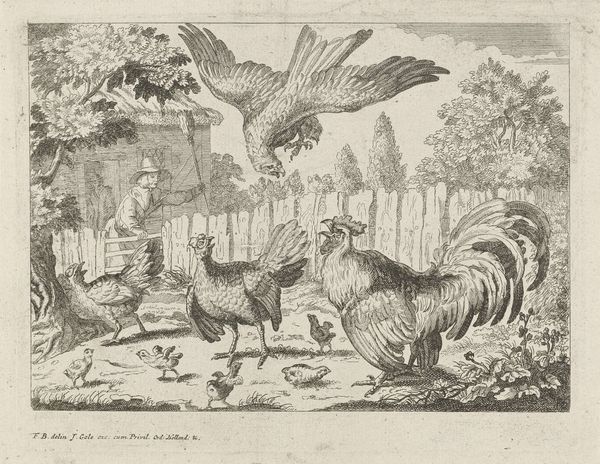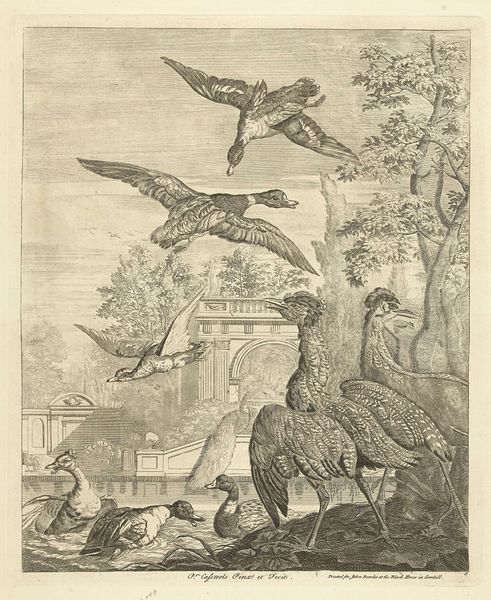
painting, plein-air, watercolor
#
painting
#
plein-air
#
landscape
#
watercolor
#
coloured pencil
#
classicism
#
genre-painting
#
watercolor
#
rococo
Dimensions: height 240 mm, width 174 mm
Copyright: Rijks Museum: Open Domain
Curator: Isn’t this curious? "Turkey and Other Birds near Classical Ruins in a Park" by Aert Schouman, painted with watercolors sometime around 1756 to 1761. It’s currently at the Rijksmuseum. Editor: It does strike a peculiar balance between the whimsical and the grand. I mean, turkeys hanging out amidst crumbling classical architecture. It's like a feathered commentary on the impermanence of empires. Curator: Absolutely. The Rococo playfulness is so distinct. Imagine Schouman, en plein air, carefully detailing each bird's plumage... he’s composing a little comedy right before us. Do you see the pompous turkey perched atop the sculptural fragment? He’s holding court! Editor: I see the Rococo but I also see a pointed juxtaposition. The birds, symbols of nature's vitality, set against the backdrop of decaying classical structures – they evoke questions around themes of decline and renewal, power and its inevitable ephemerality. Are these ruins standing as metaphors for the collapse of colonialism as nature reclaims what was taken? Curator: Hmm, quite possibly. The ruined columns do lend themselves to that reading, especially considering the history of colonialism in that era. Though I wonder if Schouman’s simply playing with contrasts – the refined ideals of classical art versus the very earthly concerns of barnyard fowl. What seems important, and what's truly essential? It's a layered conversation with watercolor, I’d say. Editor: That’s fair. But to view the setting as mere background overlooks the complex ways in which landscapes can represent specific power dynamics and political contexts. Look how small that soaring bird appears over the decaying structures—are we intended to assume nature or the wealthy have supremacy? It all plays into this tension. Curator: Yes, but ultimately I feel drawn back to Schouman’s close observation of these creatures and what he might’ve perceived as an elegant assembly amidst chaos. It reminds me, sometimes, of my own family get togethers. Editor: Ultimately, perhaps this is a chance for us to reflect on our own contemporary settings and to ask, which narratives and histories do we inherit, and what responsibility do we hold in shaping the landscapes of our own time?
Comments
rijksmuseum about 2 years ago
⋮
Aert Schouman did not paint only exotic birds. In this drawing he chose to depict true Dutch specimens, including the white Muscovy duck, the black tufted hen and the brown turkey. He situated them in appropriate surroundings, a man-made park. In the 18th century, these scenes were very popular as wall paintings in domestic rooms or galleries. This watercolour possibly served as the design for such a painted decoration.
Join the conversation
Join millions of artists and users on Artera today and experience the ultimate creative platform.

